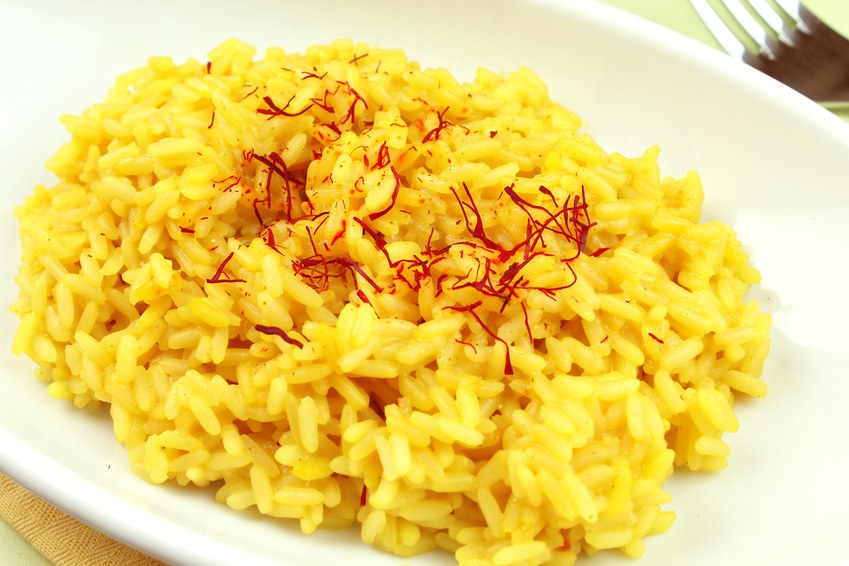How can we use saffron? What dishes can we pair with it?
Some prior preparation is necessary to use saffron properly: put the needed quantity of saffron (e.g. 0,10 g stigmas per 200 g rice) in a teacup with lukewarm water or, better, warm broth and infuse for at least an hour. To speed the procedure, stigmas can be powdered, though we recommend to keep them intact to preserve their organoleptic properties. Bright orange color of water indicates proper infusion. Shortly before cooking is done, add infused water to dish.
Once this step is done, you’re free to use saffron however you want: in a tasty risotto – delicious! – as well as in pasta, cakes, with cheese and meat.
Many suggest it is great when infused in water: saffron is rich in carotenoids (a thousand times richer than carrots!), which are among the few water-soluble pigments. This means saffron offers its best if simply boiled, as a great digestive and anti-stress drink.
What are saffron’s qualities, besides its flavor?
As already mentioned, saffron is very rich in carotenoids, which have magnificent effects on our health. First of all, they are anti-oxidant (they protect cells from ageing), they boost your immune system, they have a role as precursors of Vitamin A and as antitumor agents.
Saffron also contains Vitamins B1 and B2, which are essential for growth, have a good anti-oxidant effect and favor cellular oxygen exchange. In addition, saffron flavonoids have anti-inflammatory effects and reduce cardiovascular diseases. Finally, natural flavorings help activate metabolism and improve digestion. So, a great source of health and well-being for our body!
No wonder, it is considered both a food and a medicine in Ayurveda. Oh, don’t forget: it’s zero-calorie!
Is it true that saffron is an aphrodisiac? Where does this legend come from?
Yes, it’s true, saffron is said to be an aphrodisiac and this could be one of the reasons why it has been so valued and cherished since ancient times. I don’t know whether this is true or not: I’ve never come across any mentioning about that in books or texts. What is certain and easy to prove are the healthy qualities we’ve previously listed.
Well, we also have to remind everyone that this spice enjoyed such a widespread appeal also because it served as a fabric dye (the tunics of Roman senators and emperors were dyed using saffron) as well as a cosmetic. Even Cleopatra of Egypt used it to gild her skin!


Recent Comments